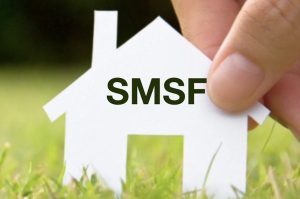Do You Pay Tax on a Self Managed Super Fund?
Understanding Self Managed Super Funds (SMSFs)
In the realm of personal finance and retirement planning, Self Managed Super Funds (SMSFs) have gained significant popularity among Australians. These retirement investment vehicles offer individuals the ability to take control of their superannuation, making decisions about where their retirement savings are invested. However, one common question that arises is whether SMSFs are subject to taxation. In this comprehensive guide, we will delve into the tax implications of a Self Managed Super Fund to help you gain a better understanding of your financial responsibilities. Do you pay tax on a self managed super fund?
What is a Self Managed Super Fund (SMSF)?
Before we dive into the tax aspects of SMSFs, it’s essential to understand what an SMSF is. A Self Managed Super Fund is a private superannuation fund that is regulated by the Australian Taxation Office (ATO). Unlike traditional superannuation funds, SMSFs provide members with the flexibility to make investment decisions based on their unique financial goals and risk tolerance.
Contributions to Your SMSF
The money you contribute to your SMSF can come from various sources, including employer contributions, personal contributions, and even contributions from family members. These contributions may have different tax implications, and it’s crucial to be aware of these nuances.

Employer Contributions
Employer contributions, often referred to as the Superannuation Guarantee, are generally taxed at a concessional rate of 15%. This means that 15% tax is applied to these contributions before they enter your SMSF. It’s important to note that the government has set limits on the amount of concessional contributions you can make each year.
Personal Contributions
Personal contributions, which are made from your after-tax income, are generally not taxed when they enter your SMSF. These contributions are known as non-concessional contributions. However, there are annual limits on the amount of non-concessional contributions you can make without incurring additional tax.
Investment Earnings in Your SMSF
Investment earnings within your SMSF, including interest, dividends, and capital gains, are generally taxed at a concessional rate of 15%. This concessional tax rate applies to income earned by your fund’s assets.
Tax on Withdrawals
The primary purpose of a Self Managed Super Fund is to provide for your retirement. When you reach the age of retirement, you can start withdrawing money from your SMSF. The tax implications of these withdrawals depend on various factors, such as your age and the type of income stream you choose. It’s important to consider the following:
Age-Related Considerations
- If you are aged 60 or over, withdrawals from your SMSF are typically tax-free.
- If you are between preservation age and age 59, a portion of your withdrawals may be tax-free, while the remaining amount may be subject to tax.
Transition to Retirement (TTR) Income Streams
If you are still working and have a Transition to Retirement (TTR) income stream from your SMSF, the income payments you receive are generally taxed at your marginal tax rate, with a 15% tax offset. However, once you reach retirement age, the income payments become tax-free.
Taxation of Capital Gains
Capital gains made within your SMSF from the sale of assets, such as shares or property, may be eligible for capital gains tax (CGT) discounts. If an asset has been held for at least 12 months, you may receive a CGT discount of up to 33.33%. This means that only two-thirds of the capital gain is subject to tax.
Strategies to Optimize Tax Efficiency
To maximize the tax efficiency of your SMSF, consider the following strategies:
Diversification
Diversifying your SMSF investments can help spread risk and potentially reduce the impact of market fluctuations on your fund’s overall tax position.
Timing of Contributions and Withdrawals
Carefully plan the timing of your contributions and withdrawals to minimize your tax liability. This may involve making contributions when your marginal tax rate is lower and withdrawing funds when you are eligible for tax-free treatment.

Seek Professional Advice
Navigating the tax regulations surrounding SMSFs can be complex. Therefore, it’s highly recommended to consult with a qualified financial advisor or tax professional who specializes in self-managed super funds. They can help you create a tax-efficient strategy tailored to your unique financial situation.
Conclusion
In conclusion, Self Managed Super Funds offer Australians greater control over their retirement savings. While SMSFs have tax implications at various stages, understanding these tax obligations is crucial for effective financial planning. By comprehending the tax aspects of contributions, investment earnings, withdrawals, and capital gains, you can make informed decisions to optimize the tax efficiency of your SMSF. Remember that professional advice is invaluable when managing your SMSF to ensure compliance with ATO regulations and to achieve your retirement goals. Start planning today, and secure your financial future with a well-managed SMSF. Find taxes on self managed super funds here.


